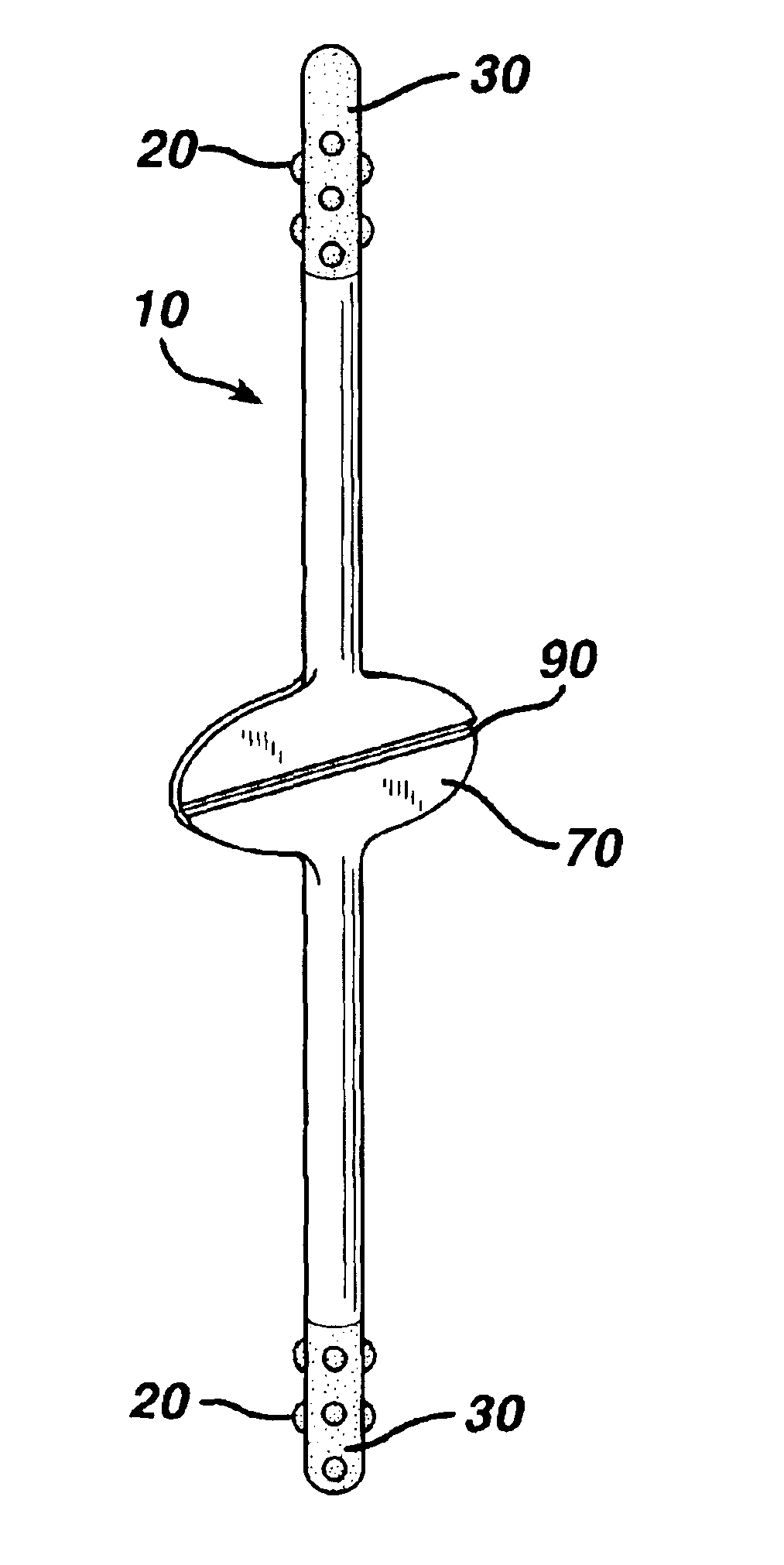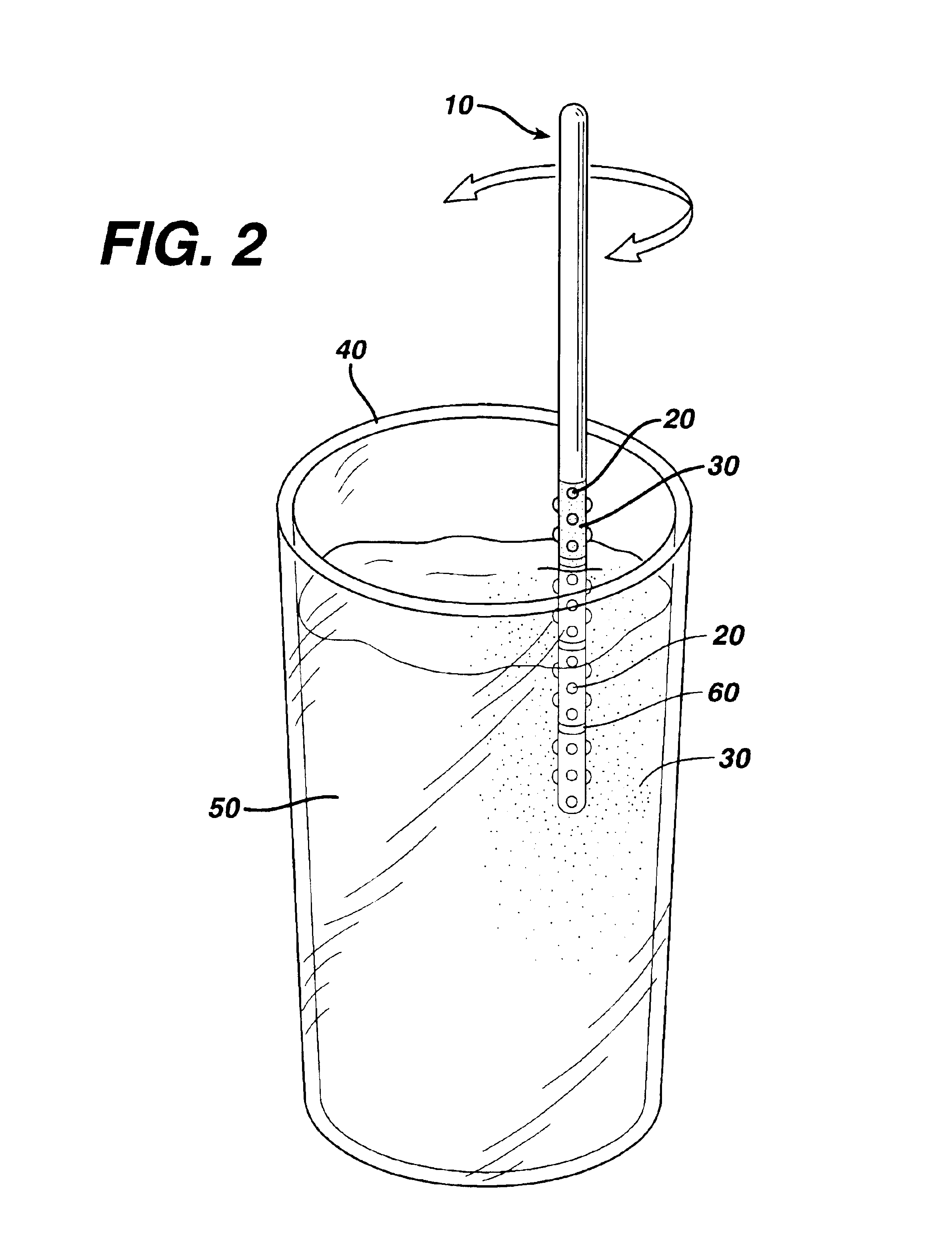Hydrophilic substance dispensing device
a technology of hydrophilic substances and dispensing devices, which is applied in the field of hydrophilic substance dispensing devices, can solve the problems of insufficient sweetness incorporated into liquid during commercial production, insufficient sweetness, and excessive sweetness, and achieves the effect of increasing the surface area for loading the hydrophilic substance and being easy to manufactur
- Summary
- Abstract
- Description
- Claims
- Application Information
AI Technical Summary
Benefits of technology
Problems solved by technology
Method used
Image
Examples
example 1
[0091]
Coating 1%, w / wSucralose12Water88
[0092]After the sucralose is dissolved in the water, a wooden rod with a slit parallel to the axis is dipped into the solution to a depth of about one inch so that about 50 microliters of solution formed a thin film on the surface of the rod and in the slit. The solution is then dried. After drying, the rod contains about 6 mg of sucralose, which is equivalent to one teaspoon of sugar.
[0093]Dipping the rod into the solution to a depth of about 2 inches will result in the deposition of about 12 mg of sucralose on the rod, which is equivalent to 2 teaspoons of sugar in sweetness.
example 2
[0094]
Coating 2%, w / wSucralose24Water76
[0095]After the sucralose is dissolved, a rod with a slit parallel to the axis is dipped into the solution to a depth of about one inch so that about 50 microliters of solution formed a thin film on the surface of the rod and in the slit. The solution is then dried. After drying, the rod contains about 12 mg of sucralose, which is equivalent to two teaspoons of sugar.
[0096]Dipping the rod into the solution to a depth of about 2 inches will result in the deposition of about 24 mg of sucralose on the rod, which is equivalent to 4 teaspoons of sugar in sweetness.
example 3
[0097]
Coating 3%, w / wSucralose12Sucrose50Water38
[0098]The sucralose and sucrose are dissolved in the water, and a rod with slit was dipped into the solution to a depth of about one inch so that about 50 microliters of the solution formed a thin film on the rod. The solution is then dried. This results in a rod with about 6 mg of sucralose, which is equivalent to one teaspoon of sugar. The incorporation of sucrose into the composition provides better adherence, and also conveys a shining appearance.
[0099]When dipped to a depth of about 2 inches, the rod contains about 12 mg of sucralose, which is equivalent to 2 teaspoons of sugar in sweetness.
PUM
 Login to View More
Login to View More Abstract
Description
Claims
Application Information
 Login to View More
Login to View More - R&D
- Intellectual Property
- Life Sciences
- Materials
- Tech Scout
- Unparalleled Data Quality
- Higher Quality Content
- 60% Fewer Hallucinations
Browse by: Latest US Patents, China's latest patents, Technical Efficacy Thesaurus, Application Domain, Technology Topic, Popular Technical Reports.
© 2025 PatSnap. All rights reserved.Legal|Privacy policy|Modern Slavery Act Transparency Statement|Sitemap|About US| Contact US: help@patsnap.com



